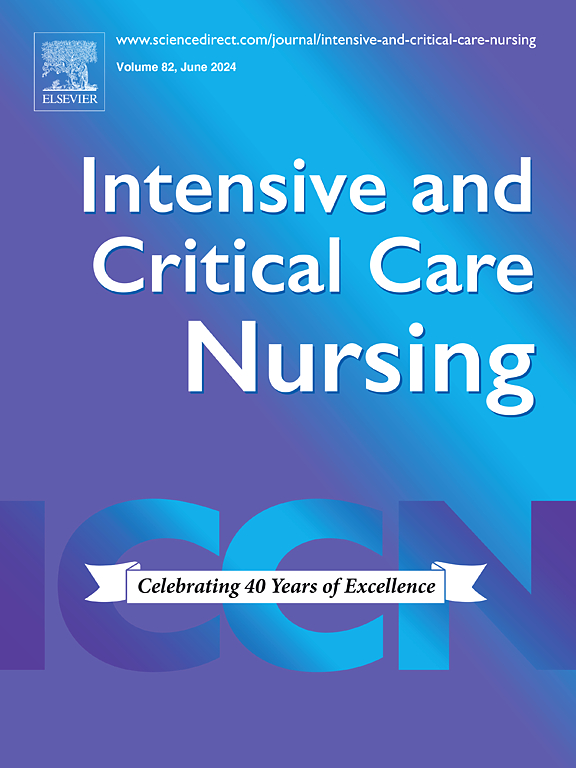Incidence and related factors of catheter-associated bloodstream infection in neonates: A systematic review and meta-analysis
IF 4.9
2区 医学
Q1 NURSING
引用次数: 0
Abstract
Objective
To identify the related factors of neonatal catheter-associated bloodstream infection (CABSI), and provide a basis for constructing a scientific and rational strategy for neonatal CABSI prevention.
Methods
CNKI, Wanfang, PubMed, MEDLINE-Ovid, Web of Science, Embase, CINAHL, and Cochrane Library were searched for publications on neonatal CABSI from the time the database was established until September 30, 2023. The language of publications was not specified. Unpublished reports and gray studies were excluded. All cohort, case-control, and cross-sectional studies were included. A meta-analysis of the incidence and related factors of neonatal CABSI were made using Revman software. Heterogeneity was evaluated using the I2 statistic method, and the publication bias was analyzed with funnel plot tests.
Results
A total of 35 studies involving 34,743 patients from 13 different countries were included. There were 15 case-control, 15 cohort, and 5 cross-sectional studies, with 14 related factors discussed. All the studies scored high (score ≥ 6) in their overall quality. According to the meta-analysis, the incidence of neonatal CABSI was 5.93/1000 catheter days (OR = 5.29). The risk factors were identified and ranked as follows according to the degree of influence: 5-minute Apgar score (OR = 4.69), the number of punctures during the stay of the line (OR = 3.49), male (OR = 3.17), mechanical ventilation (OR = 2.73), catheter repair (OR = 2.66), lower gestational age at birth (OR = 2.47), femoral vein catheter (OR = 1.92), dwell time of the catheter (OR = 1.34), and lower birth weight (OR = 1.05). Establishing sterile barrier throughout was a protective factor (OR = 0.41). Subgroup analysis suggested that the study design, catheter type and year of publication might be the primary sources of heterogeneity. The sensitivity analysis demonstrated the robustness of the results. However, the funnel plot indicated a potential publication bias.
Conclusion
Neonatal CABSI carries a significant morbidity rate and is influenced by numerous factors.
Implications for Clinical Practice
It is crucial to underscore the necessity for additional longitudinal studies to explore evidence-based approaches to lowering the risk and ultimately reducing the incidence of CABSI.
Registration
The study protocol has been registered with the PROSPERO: CRD42023443697.
新生儿导管相关血流感染的发生率及相关因素:一项系统回顾和荟萃分析。
目的:探讨新生儿导管相关性血流感染(CABSI)的相关因素,为制定科学合理的新生儿导管相关性血流感染预防策略提供依据。方法:检索CNKI、万方、PubMed、MEDLINE-Ovid、Web of Science、Embase、CINAHL和Cochrane Library自数据库建立至2023年9月30日期间有关新生儿CABSI的出版物。出版物的语言没有具体说明。未发表的报告和灰色研究被排除在外。所有的队列研究、病例对照研究和横断面研究均被纳入。采用Revman软件对新生儿CABSI的发生率及相关因素进行meta分析。采用I2统计方法评价异质性,采用漏斗图检验分析发表偏倚。结果:共纳入35项研究,涉及来自13个不同国家的34,743例患者。有15项病例对照研究、15项队列研究和5项横断面研究,讨论了14项相关因素。所有研究的综合质量评分均为高(≥6分)。根据meta分析,新生儿CABSI的发生率为5.93/1000导管天(OR = 5.29)。根据影响程度确定危险因素并进行排序:5分钟Apgar评分(OR = 4.69)、留置线期间穿刺次数(OR = 3.49)、男性(OR = 3.17)、机械通气(OR = 2.73)、导管修复(OR = 2.66)、低胎龄(OR = 2.47)、股静脉导管(OR = 1.92)、导管停留时间(OR = 1.34)、低出生体重(OR = 1.05)。建立无菌屏障是保护因素(OR = 0.41)。亚组分析提示,研究设计、导管类型和发表年份可能是异质性的主要来源。敏感性分析证明了结果的稳健性。然而,漏斗图显示潜在的发表偏倚。结论:新生儿CABSI发病率高,受多种因素影响。对临床实践的启示:强调额外的纵向研究的必要性是至关重要的,以探索以证据为基础的方法来降低风险并最终减少CABSI的发生率。研究方案已在PROSPERO注册:CRD42023443697。
本文章由计算机程序翻译,如有差异,请以英文原文为准。
求助全文
约1分钟内获得全文
求助全文
来源期刊

Intensive and Critical Care Nursing
NURSING-
CiteScore
6.30
自引率
15.10%
发文量
144
审稿时长
57 days
期刊介绍:
The aims of Intensive and Critical Care Nursing are to promote excellence of care of critically ill patients by specialist nurses and their professional colleagues; to provide an international and interdisciplinary forum for the publication, dissemination and exchange of research findings, experience and ideas; to develop and enhance the knowledge, skills, attitudes and creative thinking essential to good critical care nursing practice. The journal publishes reviews, updates and feature articles in addition to original papers and significant preliminary communications. Articles may deal with any part of practice including relevant clinical, research, educational, psychological and technological aspects.
 求助内容:
求助内容: 应助结果提醒方式:
应助结果提醒方式:


